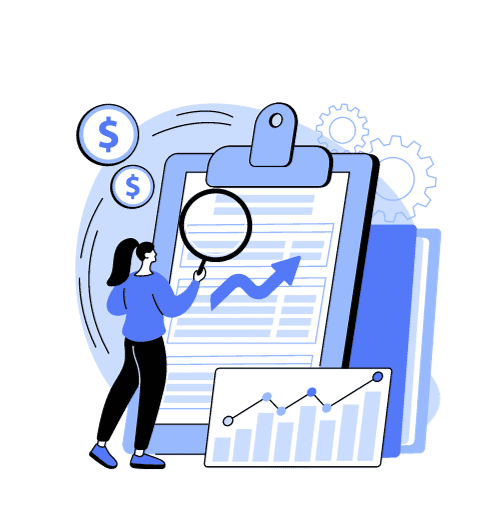Gold Loans – the Whats, Hows and Whys



Shiny, pure and incredibly valuable, gold is the metal that’s capable of transcending cultures, languages and businesses. Although the occurrence of this precious element can date back many millennia, gold has featured as a form of currency only since 550 BC. The Gold Standard, is a system followed by most countries to fix the value of their respective currencies in terms of a specific amount of gold. Any country that uses this system sets a fixed price for gold and does trade (buying and selling) at that price.
The demand for gold has been on the rise in the past decade and hit an eye-bulging 4,356 metric tons in 2019. There are throngs of investors around the world that believe gold is more capable of keeping a strong position through periods of recession than other assets. Because of its relative price stability in fact, gold is used in a variety of investment purposes, other than its commercial and industrial uses. A gold loan is an easy and quick way to get some liquidity in your life.
Gold Loan: In Simple Terms
A gold loan is a secured loan that lenders offer by taking gold ornaments, bars and coins from borrowers as collateral. The credit amount sanctioned to borrowers is usually a certain percentage of the gold’s value. You repay the loan amount in periodic installments and at the end of the loan term, you get your gold back! It’s as simple as that. Gold loans have an edge over other secured facilities like car and home loans – there are zero restrictions on the end use of the collateral. Which means, you can use your gold umpteen times to avail a loan without losing the intrinsic value of gold.
Loans against gold are like double-edged benefit candies to borrowers and lenders – customers get to keep their gold assets once the loan is repaid, and the lenders can sell the collateral gold in the market to recover the outstanding amount. Traditionally gold loans used to be disbursed just like any other credit products, but in today’s digital finance age, every phase of the loan application and disbursement process is automated using gold loan softwares like CloudBankin.
These softwares are the operational engine to seamless business flow in the gold loan industry. Used for loan maintenance, gold loan renewals, multi-valuation, rebate calculations, margin calls, maturity date reminders, and more, gold loan software provides a clean-cut, no-frills, and efficient solution to gold loan lenders.
You May Also Like:
Turning Treasures into Funds: A Guide to Gold Loan Processes and Benefits
Process of Securing a Gold Loan
Here is the layman version of securing a gold loan: you take your gold articles to a lender with a specific set of documents for verification. The lender does value tests, calculates the amount of loan against gold that you are eligible for and then checks your documents. And that’s it – you get the loan. As per the terms of your agreement, you will do repayment of the principal amount coupled with the interest amount and once your loan term is over, the lender hands all your gold back to you.
Gold loans can be availed much easier than other types of loans due to the value of the underlying security. A highly-rated gold loan software can ease the loan cycle process, but the process itself contains various aspects that are unique and noteworthy.
Eligibility: Completely unlike personal loans that have very rigorous criteria, gold loans have much more relaxed conditions to be obtained. Availability of enough gold to pledge as collateral is pretty much the only criterion to get a loan against gold. A person doesn’t even need a good credit score to be eligible, although it is imperative to not have defaults from previously availed gold loans.
Collateral: The gold placed as collateral usually needs to read between 18 and 24 carats on the purity scale. Many banks accept gold ornaments as collateral, while non-banking financial companies (NBFCs) can take gold jewelry. These financial institutions value the gold using in-house techniques and gold loan softwares and calculate a loan amount that is normally 75% of the value of the gold pledged. This is called LTV – loan to value ratio. Although the LTV can change from company to company, the central bank of a country can expertly influence this average based on market sentiment and economic indicators.
Interest Rates and Rebates: Interest rates for loans against gold are historically lower than those of personal loans but are 2-3% per annum higher than the base rate of a country. Gold loans interest rates depend on factors like weight/amount of collateral, loan tenure, loan amount, etc. Banks typically charge lower rates than NBFCs in this type of loan and some lenders also slap a 1-3% loan processing fee. Interest rates can be fixed or compounded, depending on the company offering gold loans. An attractive discount is also handed by select lenders to customers who pay their interest like clockwork. This is called a rebate, and it can be about 1-2% off on the original interest rate.
Jumping Interest Rate: Sometimes gold loans can be a double-edged sword. On the opposite spectrum of rebates, you have jumping interest rates. When customers do timely repayments, the rebate rate pulls down the base interest rate that lifts up their spirits. But when they delay their EMI payment in the month it’s due, they can be charged an extra rate on interest on the overdue payment. This rate goes over and above the base interest rate but is applicable only on the overdue amount. For example, Ram takes a loan for ₹10,000 on 1st August and his next repayment date is 1st September with a 1% interest. In case he doesn’t pay, the interest for the following month will jump to 2%. Some lenders make it worse by compounding this jumping rate of interest.
Auction: Another crucial process to understand before considering a gold loan – auction. Failure to repay your EMI for 3 consecutive months or more will result in your precious, pledged gold being auctioned off by the lender. The gold in question is considered as an NPA (non-performing asset). The auction is usually steered by 3rd party professional auctioneers (to avoid conflict of interest) and is done at a fair price. When your jewelry is sold during auction, it’s done only for the value of the gold – meaning you lose any making charges paid at the time of purchase. For instance, Rachel lost her job recently and has not paid her gold loan EMI for 3 months. Her jewelry is now an NPA and her NBFC lender puts it up for auction after giving her a 2-week heads up. This lender will cover all Rachel’s liability amounts through the proceeds of this public auction. There is some silver lining in the process though: like any gemstone fitted in the jewelry will be returned to you and if an excess recovery is made post-auction, that money will be handed back to you. But all interest accumulated at the time of auction is also recovered from the sale.
Margin Calling: Customers have the option of opening a margin account against their gold assets. The nature of this account gives a free hand to borrowers to leverage larger positions with the gold available for pledging. Margin calling in the gold industry is just like for stocks and options: it happens when the value of the account falls below a threshold and triggers the investor to add more money to meet the loan terms of the lender. Once a margin call is struck and the borrower isn’t able to add amounts to level with the requirements, then the lender can sell off the underlying assets, in addition to charging fees, commissions and interest to the account holder. Let’s say Paul has a margin gold account for $1,000 and the gold value loses 3/4th of its value and falls to $250. The lender will have a minimum LTV margin requirement of $350 in which case, the company will send a margin call to Paul, demanding him to pay up $100 to keep up the account. In case he is unable to pay up, the lender can sell off some gold to bring the account above the margin requirement.
Verification and Disbursal: Minimal documentation requirements is a major reason why gold loans are so popular around the world. You can get away with as few as your identity proof, address proof, invoice copy of your purchased gold and some passport size photographs. In today’s digital age, these documents can even be uploaded into the lender’s online portals that will be synced to their gold loan software. When you hand over your gold to the financier, they will do any of the well-known verification tests to check the authenticity: stone/touchstone test, acid test, smell test, hallmark check, sound test and others. Then weight and carat details are verified to determine the loan amount, gold loan interest rates and loan tenure after which the disbursal is done quickly.
Door-step Onboarding
The COVID-19 predicament has curbed movement globally, but technology is always to the rescue. Now loans against gold can be availed right from your home through door-step onboarding that numerous lenders have launched. It’s all completely automated and digitized: a customer service rep visits your house with a tablet (which has a weighing equipment attached) on a pre-fixed date and time, carries out digital checks of required documents, verifies and vets your gold assets, inputs all these details into the gold loan software built-in to the device, generates the loan documentation, gets automated approval through the software and immediately disburses the loan to your account.
The gold is kept in a tamper-proof packet that is marked with a unique customer ID and is stored in a vault room at the lender’s premises. A vault number is allocated against the customer’s loan ID for easy tracking. During this entire process, the customer representative’s location is monitored. Some lenders also offer insurance cover against gold loans, although the coverage amount is limited based on the lender’s discretion. They offer insurance to customers facing financial exigencies during economic downturns like the one due to COVID-19.
Benefits of Gold Loan Software
- One-stop platform to capture customer info, financial records, gold info, prevailing interest rates and more.
- Records and tracks customer documents, loan documents and inventory of collateralized assets.
- Automatically calculates gold loan interest rates and repayment options available from lenders. Captures and sends out reminders for penalties on overdue loans, in addition to interest recalculation.
- Some gold loan softwares like CloudBankin have an integrated accounting feature that is used in re-pledging gold or to make an auction entry for NPA gold.
- You can effortlessly change gold prices and recalculate loan terms, reducing time and manual calculation work.
- Quickly and efficiently generate relevant reports through user-friendly and customizable reporting structures within the platform.
- Audit trails in softwares list modification details clearly, preventing any kind of potential frauds.
Current Trends in Gold Loans
During the recent COVID-19 pandemic, gold prices rose to unprecedented standards and crossed the $2,000-mark, making it a phenomenal asset to hold on to. This directly impacted the interest rates on gold loans. In fact, in some countries the rates stooped to as low as 7.5%, giving temporarily cash-strapped individuals who faced salary cuts and job losses a worry-free option to keep their liquidity afloat.
CloudBankin
Loan against gold is made simpler, intuitive and worry-free with a digital tool like CloudBankin. Gold loans can sometimes be very complex, and this software has a unique design and remarkable features that will cater to the technological needs of financiers. It comes with an integrated accounting tool that can be used to manage a lender’s gold loan accounts with accuracy and aplomb.
Related Post

Unveiling the Top 15 NBFC, Fintechs, and MFI Associations, Networks & Communities in India
(List Updated June 2023) In the ever-evolving financial landscape of

Impact of Budget 2021 on Banks & NBFCs
As COVID-19 wreaked havoc across industries in India in 2020,

Simplifying Credit Reporting: Data Submission to Credit Bureau Made Easy
In this blog, we will unravel the mystery of data
- Email: salesteam@cloudbankin.com
- Sales Enquiries: +91 9080996606
- HR Enquiries: +91 9080996576